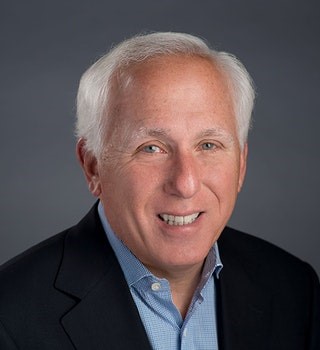A preferred insurance contractor network or third-party administrator (TPA) is not the friend of the property insurance policyholder. As indicated in yesterday’s post, Policyholders, Restoration Contractors and Public Adjusters Should Be Concerned About Managed Repair and Third Party Administrators Working in Preferred Contractor Networks, Kevin Jones’ book, The Insurance Gods: How the Insurance and Restoration Industries Have Failed the Consumer, is a must-read for those wanting to more fully understand how TPAs work against policyholder interests.
Jones also wrote a post for policyholders warning them of the TPA scam, It’s Just Not as Simple as Most People Think It Is. Jones explains that when a third party (TPA) gets involved in the adjustment by being an administrator of the reconstruction, the policyholder no longer has a direct relationship with the insurance company that contractually promised to pay for the damage:
What you don’t know is that your agent is the one who is concerned about your best interest. And if you get the right adjuster, he or she is, as well. However, the carrier, the one that actually foots the bill is not concerned about your best interest, they’re concerned about their bottom dollar. So, they hire a TPA to deal with their claims. The TPA has absolutely no skin in the game for you, as they are just there to objectively manage the claim. The restorer is in a bad position because they now have 2 contracts in play—one with you, and one as a vendor with the TPA (or the insurer depending on with whom they have a contract.
All of this puts you, the homeowner, in a bind. You now have a contract through your policy with the insurance company. You also now have a contract with the restorer to dry, repair, and clean your home. Now, you have a TPA involved in your claim, and what you don’t know is that the TPA works only for the insurer, and not for you. And the restoration company is in a bind, because they have two contracts! They have one with the TPA who guarantees them a certain amount of work, and they have one with you, who has authorized them to perform the work. You are about to go on a journey that is going to disappoint you as you find out how it all really works, and how you, the homeowner, the policyholder, are the ones who ultimately get left out of the loop.
Kevin Jones’ follow-up post, It’s Just Not as Simple as People Think It Is – Part 2, shows that when a TPA gets involved, the relationship is no longer just the policyholder to the insurer, but this:
Jones writes to policyholders:
The restorer left you with the impression that things are being handled. You see, like you, they are in a bad spot. Either you, or their franchise headquarters, has agreements in place with the Insurer or the TPA (or both) that limits what they can do, and what they can say to you. They are often told very directly by their corporate headquarters not to do anything to jeopardize the relationship with the Insurer or TPA.
The restorer leaves the premises, and you go several days without hearing anything. The TPA is determining if your policy has the proper coverages to ensure your claim meets those criteria. Meanwhile, your home is sitting…
Finally, the restorer comes back to you and states that after discussions with the insurer and TPA (discussions which you were not privy to) it has been determined that the Category of Water for your home has been downgraded to a Category 2 from a 3. What you don’t know is that this changes everything. The cost of the job just went down significantly. Remember Category 3 water means that everything porous needs to be removed. This would mean affected carpet, pad, affected sheetrock, affected insulation. One could argue that other components such as affected baseboard, chair rail, crown molding, cabinetry, bookcases, hardwood flooring be removed as well. The other factor that affects these items is the amount of time they may have sat while awaiting a decision. Now that it’s being downgraded from a Cat 3 to a Cat 2, you are in a pinch. Things that should be removed, disposed of, and replaced are now be saved.
You begin to question this decision but are told that all is well….
Later this week, the National Association of Public Insurance Adjusters (NAPIA) will name Clay Morrison as their President. Many may not know that Morrison was a contractor in State Farm’s Preferred Vendor program before becoming a public adjuster. Restoration Contractors Providing Great Quality Workmanship Are Policyholder Friends But Many Insurance Companies Refuse To Pay For Quality noted a short version of Clay Morrison’s experience in that program and the similar fight many restoration contractors face when battling with TPAs and insurers:
Quality restoration contractors fighting these adjustment practices are heroes for all of us. Demanding fair pricing, which allows for quality and standing up to the insurance industry adjusters is admirable. It is far easier to accept lower pricing and provide cheap and inferior workmanship.
A post about how State Farm tried to influence and obtain ‘okay’ construction and pricing is found in, Membership in Professional Organizations Helps a Small Public Adjusting Firm Achieve a Big Result. Clay Morrison was a State Farm preferred construction vendor. The State Farm claims manager demanded that Morrison provide unethical pricing, which would only result in cheap construction. Rather than acquiesce and keep the State Farm business, Clay Morrison rose to the occasion at his moment of truth and refused. He lost State Farm’s business, but he was a champion for all policyholders, his family and himself.
Similar battles are being fought every day by those in the insurance restoration construction trade. Those contractors that follow the rules and refuse to become just ‘okay’ should be congratulated.
The insurance industry always touts the benefits about why these programs are so great for the policyholder. They try to put lipstick and dress up the insurance industry’s newest version of managed repair. As we all know, a pig dressed up and with lipstick is still a pig.
Thought For The Day
You can put wings on a pig, but you don’t make it an eagle.
—Bill Clinton






